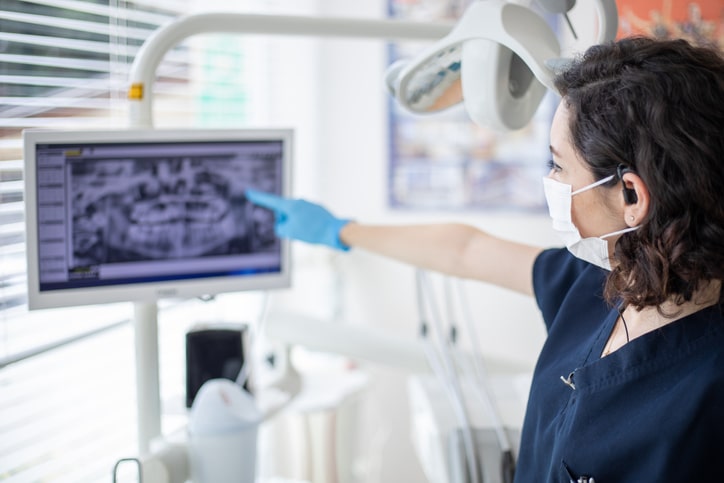Also known as Gum Disease, Periodontal Disease is a serious dental condition that can develop due to poor health and irregular visits to the dentist. This disease is not uncommon. Four out of five people have periodontal disease and don’t know it! Most people are not aware of it because the disease is usually painless in the early stages. Ultimately, periodontal disease is characterized by red, swollen, and bleeding gums. Smoking also increases the risk of periodontal disease.
Not only is it the number one reason for tooth loss, but research also suggests that there may be a link between gum disease and other conditions such as stroke, bacterial pneumonia, diabetes, cardiovascular disease, and increased risk during pregnancy. Researchers are determining if inflammation and bacteria associated with periodontal disease affect these systemic diseases and conditions.
Dental Plaque
The word periodontal means “around the tooth”. This disease begins with a build-up of plaque, a sticky film bacteria, and then attacks the gums around the teeth and the bone that support it. If plaque is not removed, after several days it hardens and forms into calculus or tartar. Tartar is only removed and scraped off the surface of the teeth by a dentist. Tartar will make your teeth appear yellow and even cause bad breath which then begins to destroy the gums and bone.
Reducing Your Risk of Periodontal Disease
You can help reduce your risk of developing periodontal disease by practicing good oral hygiene, a balanced diet, and visiting your dentist every 6 months.
Additionally, be aware of the following signs and symptoms of periodontal disease:
- Bleeding gums – Gums should never bleed, even when you brush vigorously or use dental floss.
- Loose teeth – Also caused by bone loss or weakened periodontal fibers (fibers that support the tooth to the bone).
- New spacing between teeth – Caused by bone loss.
- Persistent bad breath – Caused by bacteria in the mouth.
- Pus around the teeth and gums – Sign that there is an infection present.
- Receding gums – Loss of gum around a tooth.
- Red and puffy gums – Gums should never be red or swollen.
- Tenderness or Discomfort – Plaque, calculus, and bacteria irritate the gums and teeth.

Periodontal disease is very treatable when diagnosed early. Be sure to visit your dentist at Affordable Smiles regularly — not only for examinations but also for thorough and preventative cleanings of gum disease — at any of our locations in:
Comfortable, Trustworthy Care
For over 20 years, Affordable Smiles has been providing sedation dentistry services to our patients to ensure that they have the best experience possible. We want to help you maintain your oral health in a safe, trusting environment. To learn more about managing your dental phobia with Affordable Smiles, contact us today.